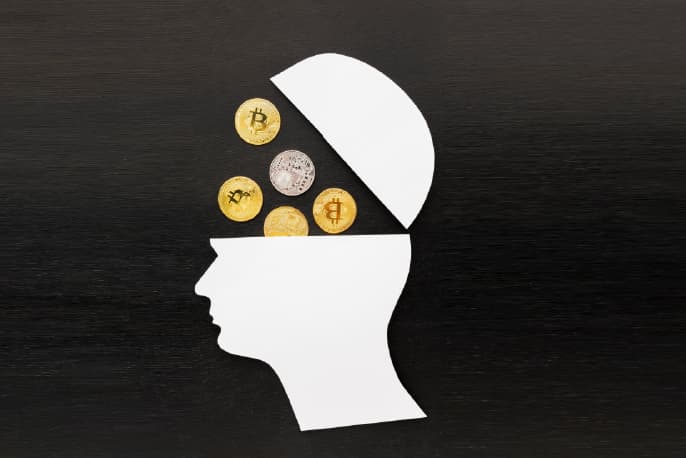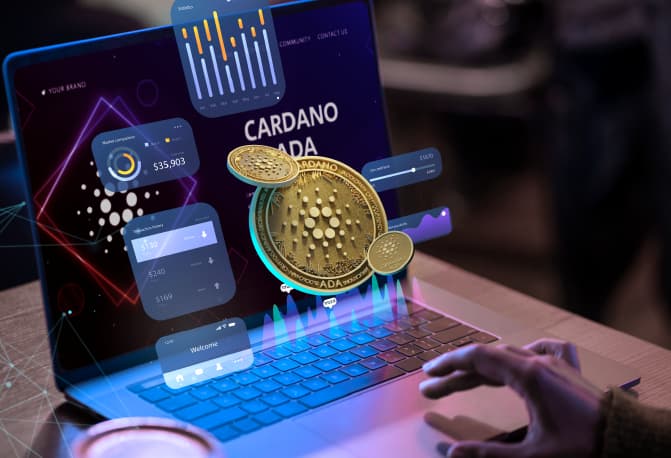A cryptocurrency is a digital or virtual currency that uses cryptography for security. A defining feature of a cryptocurrency, and arguably its most enduring allure, is its organic nature. It is not issued by any central authority, rendering it theoretically immune to government interference or manipulation. A cryptocurrency is difficult to counterfeit thanks to this security feature.
Table Of Contents:
What Is a Cryptocurrency?
Bitcoin, the first and most well-known cryptocurrency, was created in 2009. Cryptocurrencies are often traded on decentralized exchanges and can also be used to purchase goods and services. Some countries have even begun to accept cryptocurrencies as legal tender. Cryptocurrencies are often prized for their anonymity, security, and decentralization. However, they have also been associated with criminal activity and volatile prices. As the cryptocurrency market evolves, cryptocurrencies will likely become increasingly mainstream.
There are a variety of different types of cryptocurrency available today. Bitcoin, the first and most well-known type, was created in 2009. Since then, hundreds of other cryptocurrencies have been created. Like Ethereum and Litecoin. Some are similar to Bitcoin but with slight variations, while others, like Monero and Zcash, offer increased anonymity.
In this blog post, we will be discussing the different types of cryptocurrencies so that you can broaden your portfolio by investing intelligently in cryptocurrencies.
What Is a Blockchain?
A blockchain is a digital ledger of all cryptocurrency transactions. It is constantly growing as “completed” blocks are added to it with a new set of recordings. Each block contains a cryptographic hash of the previous block, a timestamp, and transaction data. Bitcoin nodes use the blockchain to differentiate legitimate Bitcoin transactions from attempts to re-spend coins that have already been spent elsewhere.
What Is a Decentralized Exchange?
A decentralized exchange (DEX) is a type of cryptocurrency exchange that does not rely on a central authority to match orders. Instead, orders are matched by smart contracts on a blockchain.
One of the major advantages of decentralized exchanges is that they are much more secure than centralized exchanges. This is because there is no central point of control that can be hacked or otherwise compromised. DEXes also offers a higher degree of privacy, as they do not require personal information to be traded.
What Is Market Cap?
Market cap is short for market capitalization. It is the total value of all the coins in circulation. Market cap is calculated by multiplying the price of a coin by the circulating supply.
For example, if there are 16 million Bitcoins in circulation and each Bitcoin is worth $7,000, then the market cap of Bitcoin would be $112 billion.
What Is a Cryptocurrency Wallet?
A cryptocurrency wallet is a digital wallet used to store, send, and receive digital currency like Bitcoin. Cryptocurrency wallets are often categorized into three types: software, hardware, and paper.
Software wallets are apps that run on your computer or phone. Hardware wallets are physical devices that look like USB drives and can be used to store your cryptocurrency offline. Paper wallets are pieces of paper with your private keys printed on them.
How Do Cryptocurrencies Work?
Cryptocurrencies are decentralized, meaning they are not subject to government or financial institution control. Bitcoin and other digital currencies are based on blockchain technology. Transactions are recorded in a blockchain, which is a digital ledger of all cryptocurrency transactions, similar to a traditional bank ledger. The ledger is constantly growing as “completed” blocks are added to it with a new set of recordings.
Each block contains a cryptographic hash of the previous block, a timestamp, and transaction data. Bitcoin nodes use the blockchain to differentiate legitimate Bitcoin transactions from attempts to re-spend crypto coins that have already been spent elsewhere.
Payment Cryptocurrencies

Cryptocurrencies have been gaining in popularity in recent years, and there are now a number of different types of payment cryptocurrencies available.
Bitcoin, the first and most well-known cryptocurrency, was created in 2009 to make online payments without the need for a third party such as a bank or credit card company. Since then, a number of other payment cryptocurrencies have been created, including Litecoin, Ethereum, and Ripple. These payment cryptocurrencies all work in similar ways, allowing users to make peer-to-peer transactions without a central authority.
Payment cryptocurrencies are often seen as an alternative to traditional fiat currencies, and they have the added benefit of being more secure and private. As the use of cryptocurrencies continues to grow, more and more businesses will likely begin to accept them as a form of payment.
Asset-Backed Cryptocurrencies
Asset-backed cryptocurrencies are a type of cryptocurrency that is backed by a physical asset, such as gold or silver. The value of an asset-backed cryptocurrency is based on the underlying asset’s value. For example, if you have a gold-backed cryptocurrency, each coin would be worth the same amount as one gram of gold.
Crypto assets offer a number of advantages over traditional fiat currencies. They are often seen as more stable and less prone to inflation, as the underlying asset’s value is not affected by economic conditions. Asset-backed cryptocurrencies are also more secure, as they are not subject to the same volatility as traditional fiat currencies.
Commodity-Backed Cryptocurrencies
A commodity-backed cryptocurrency is a type of asset-backed cryptocurrency backed by a physical commodity, such as oil or corn. The value of a commodity-backed cryptocurrency is based on the value of the underlying commodity.
Commodity-backed cryptocurrencies offer a number of advantages over traditional fiat currencies. They are often seen as more stable and less prone to inflation, as the value of the underlying commodity is not affected by economic conditions.
Commodity-backed cryptocurrencies are also more secure, as they are not subject to the same volatility as traditional fiat currencies.
Infrastructure Cryptocurrencies
Despite the volatility of the market, investors continue to pour money into digital assets in the hopes of striking it rich. A new breed of cryptocurrency called an infrastructure coin is now emerging that promises to offer a more stable and practical investment. Infrastructure coins provide a digital currency in a specific ecosystem or network.
For example, Filecoin is a coin that can be used to purchase storage on the Filecoin network. Similarly, Kin is a token that can be used to buy goods and services within the Kik messaging app.
Infrastructure coins can offer investors a more predictable return than other cryptocurrencies by tying their currency to a real-world application. While infrastructure coins are still in their early stages of development, they have the potential to become a significant force in the market.
Stablecoins
Stablecoins are a type of cryptocurrency designed to maintain a stable value. The most famous stablecoin is Tether, pegged to the US dollar. Tether allows users to store value in USD without converting their currency into dollars.
Other stablecoins have been created pegged to different fiat currencies, including the euro and the Japanese yen. Some stablecoins are pegged to assets such as gold or oil.
Stablecoins offer investors a way to hedge against the cryptocurrency market’s volatility by allowing them to store their value in a more stable asset. While stablecoins are still in their early stages of development, they have the potential to become a significant force in the cryptocurrency market.
Financial Cryptocurrencies
There has been a growing interest in financial cryptocurrencies in the past few years. Cryptocurrencies are digital or virtual currencies that use cryptography to secure their transactions and control the creation of new units. Bitcoin, the first and most well-known cryptocurrency, was launched in 2009.
Cryptocurrencies are often decentralized, not subject to government or financial institution control. This can make them attractive to investors looking for an alternative to traditional investments.
Cryptocurrencies are also often volatile, meaning their prices can fluctuate greatly. This can be both a risk and an opportunity for investors. As interest in cryptocurrencies continues to grow, it will be essential to watch this emerging market closely.
Service Cryptocurrencies
A new type of cryptocurrency has emerged in recent years: the service cryptocurrency. Unlike traditional cryptocurrencies, primarily used as a store of value or a medium of exchange, service cryptocurrencies are designed for specific services, such as cloud storage or online payments. While still in their infancy, service cryptocurrencies have the potential to revolutionize the way we interact with online services.
One of the most promising applications of service cryptocurrencies is in the area of cloud storage. Currently, many cloud storage providers charge high fees for their services. However, with a service cryptocurrency like Filecoin, users can rent out their unused hard drive space and earn rewards. This reduces the cost of cloud storage for everyone involved, but it also incentivizes people to contribute their unused hard drive space.
Service cryptocurrencies also have the potential to disrupt the online payments industry. Currently, there are a number of different payment processors, such as PayPal and Stripe, that charge high fees for their services. However, with a service cryptocurrency like Stellar, users can send money to anyone in the world for a fraction of the cost. This could potentially revolutionize the way we make online payments.
While still in their early stages of development, service cryptocurrencies can potentially change how we interact with online services. As more and more people begin to use them, we will likely see a major shift in using the internet.
Media & Entertainment Cryptocurrencies
Cryptocurrencies have been making headlines lately, and for a good reason. These digital tokens have the potential to revolutionize several industries, including media and entertainment. Here’s a closer look at how cryptocurrencies could disrupt the media and entertainment landscape.
One of the most promising applications for cryptocurrencies is in the area of content monetization. For instance, a video creator could use a cryptocurrency to tip viewers for watching their content. This would create a direct financial relationship between creator and viewer without the need for an intermediary platform like YouTube or Patreon. This model could also be used for other types of content, such as articles, music, and more.
Cryptocurrencies could also be used to fund creative projects directly. For instance, a filmmaker could use a cryptocurrency to raise funds for their next movie. This would allow them to bypass traditional funding sources, such as studios or venture capitalists. Instead, they would be able to solicit funds from the community directly.
In addition, cryptocurrencies could be used to create new types of content platforms. For example, a social media platform could use a cryptocurrency to reward users for creating and sharing content. This would incentivize users to contribute their time and effort to the forum.
The ability to facilitate direct financial relationships between creators and viewers with cryptocurrencies could upend the traditional way these industries operate.
E-Commerce Cryptocurrencies
Cryptocurrencies are often seen as a way to pay for goods and services online. However, they can also create new types of e-commerce platforms. Here’s a closer look at how cryptocurrencies could disrupt the e-commerce landscape.
One of the most promising applications for cryptocurrencies is in the area of peer-to-peer marketplaces. For example, a marketplace like Airbnb could use a cryptocurrency to allow users to pay each other for goods and services directly. This would bypass the need for a central platform, which takes a cut of each transaction.
Another potential application for cryptocurrencies is in the area of micropayments. For example, a website could use a cryptocurrency to allow users to pay for individual articles or videos. This would create a new revenue stream for content creators and could potentially lead to the creation of new types of content.
Cryptocurrencies have the potential to disrupt the e-commerce landscape. Their ability to facilitate direct financial relationships between buyers and sellers could upend the traditional way these industries operate.
Banking & Finance Cryptocurrencies
One of the most promising applications for cryptocurrencies is in the area of cross-border payments. For example, a bank could use a cryptocurrency to send money to another country. This would bypass the need for a middleman, such as Western Union, and could potentially lead to lower fees.
Another potential application for cryptocurrencies is in the area of lending. For example, a lender could use cryptocurrency to extend loans to borrowers in another country. This would bypass the need for a middleman, such as a bank, and could potentially lead to lower interest rates.
Finally, cryptocurrencies could be used to create new types of financial products. For example, a company could use a cryptocurrency to issue shares. This would allow investors to own a piece of the company directly and potentially lead to new types of investment vehicles.
Cryptocurrencies have the potential to disrupt the banking and finance landscape. Their ability to facilitate direct financial relationships between lenders and borrowers could upend the traditional way these industries operate.
The Bottom Line

Cryptocurrencies are a new and exciting technology with the potential to disrupt a number of industries. While there are many potential applications for these digital currencies, it is still early days, and it remains to be seen which will ultimately succeed. Nevertheless, the possibilities are intriguing and warrant further exploration.

















































